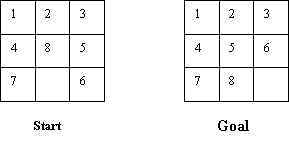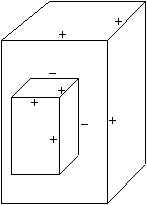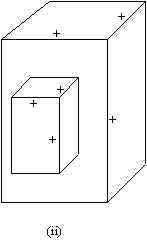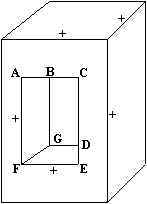NATIONAL UNIVERSITY OF SINGAPORE
SCHOOL OF COMPUTING
SEMESTER I (1999-2000)
EXAMINATION FOR
CS3243: ARTIFICIAL INTELLIGENCE
November 1999 Time Allowed: 2 Hours
INSTRUCTIONS TO CANDIDATES
- This examination paper consists of FIVE (5) questions and comprises TWELVE
(12) printed pages including the cover page.
- Write your answers in the blank spaces in this answer book only. Write on one
side only.
- This is an OPEN BOOK examination.
- Please fill in your Matriculation Number below. Also write your matriculation
number on the top right hand corner of every page.
Matriculation Number:
For
Examiner’s Use Only |
|
Marks |
| Question 1 |
|
| Question 2 |
|
| Question 3 |
|
| Question 4 |
|
| Question 5 |
|
| TOTAL: |
|
1. The following diagram shows the start and goal states of an 8-puzzle game.

In the text book, a heuristic function h(n) is defined as the number of
tiles out of place. However, assuming that the blank space is also considered a tile, we
define a different heuristic function h’(n) as follows:
h’(n) = the number of tiles (including
the blank) that are out of place
Thus h’(0) = 4 (for the above start state). Now answer the following questions:
(a) Is h’(n) admissible? Why?(4%)
(b) Is h’(n) more informed than h(n)? Why?(3%)
(c) Is h’(n) monotonic? Why?(3%)
(d) Using f(n) = g(n) + h’(n), where g(n) is the number of moves from the start
state, draw a search tree from start to goal based on the best first search.
In each node of your search tree, draw the board configuration and indicate the value of
f(n), g(n) and h’(n) for the configuration. (The start and goal states are reproduced
here for your easy reference) (10%)


2. A Re-write Production Rule System maintains a rule base containing
10 context free grammar rules as follows:
1. s ® np vp
6. noun ® web
2. np ® art noun
7. noun ® spider
3. vp ® verb np
8. noun ® crawler
4. art ® the
9. verb ® crawls
5. art ® a
10. verb ® searches
The system’s working memory contains symbols each of
which, upon matching with the left hand side of a rule, will be replaced with the symbols
on the right hand side of the rule. Thus if the working memory contains one symbol s,
upon firing rule 1, the working memory will then contain symbols np vp.
The system’s conflict set contains the set of rules whose left
hand side matches with a symbol in the working memory. To resolve the conflict set, select
rules that may be fired by the most recently added symbol in the working memory (recency
strategy). Note that when np vp replace s in the working
memory, vp is considered more recently added than np. When more than one
rules may be fired in the recency strategy, select rules that have not been fired for the
longest time period (refraction strategy). When more than one rules may be fired in
the refraction strategy, select the first rule (first rule strategy) .
(a) Show the operation of the production system by completing the following table until
no more rules can be fired (i.e. when the conflict set is empty.)(10%)
Iteration # |
Working memory |
Conflict set |
Rule fired |
0 |
s |
1 |
1 |
|
|
|
|
|
|
|
|
|
|
|
|
|
|
|
|
|
|
|
|
|
|
|
|
|
|
|
|
|
|
|
|
|
|
|
|
|
|
|
|
|
|
|
|
|
|
|
|
|
|
|
|
|
|
|
|
2.(b) Draw the space searched by the above execution of rules,
indicating the direction of search. (7%)
(c) The search space constructed in 2(b) is actually a parse tree. Is
this parse tree a top-down parse tree or a bottom-up parse tree? Explain your answer. (3%)
- (a) Evaluate the following s-expressions:(6%)
(append ’(a b) ’(c d) ’(e f))
Þ
(append ’((a b) (c d)) ’(e f))
Þ
(length ’((a b) (c d) (e f)))
Þ
length ’(((a b) (c d)) (e f)))
Þ
(reverse ’((a b) (c d) (e f)))
Þ
(reverse ’(((a b) (c d)) (e f)))
Þ
(b) Define your own
"reverse" function, named "my-reverse" that gives the same output as
the system function "reverse". Your "my-reverse" function must be
recursive. (8%)
(c) A palindrome is a list that has the same sequence of elements
whether it is read from left to right or from right to left. A function
"palindromize" is to take an input list and returns a parlindrome that is twice
as long. Thus
(parlindromize ’(a b c d e f))
Þ (a b c d e f f e d c b a)
Define parlindromize using "append" and
"my-reverse". Your function definition need not be recursive but
"append" and "my-reverse" must be used. (4%)
(d) What will be the output of (parlindromize ’((a b) (c d) (e
f))) ? (2%)
- The following set of predicate calculus expressions is modified from the text
book:
- collie(fred)
- master(fred, sam)
- day(saturday)
- warm(saturday)
- trained(fred)
- " X [spaniel(X) Ú (collie(X)
Ù (trained(X)) Þ gooddog(X)]
- " (X,Y,Z) [gooddog(X) Ù
master(X,Y) Ù location(Y,Z) Þ
location(X,Z)]
- day(saturday) Ù warm(saturday) Þ
location(sam,park)
- day(saturday) Ù Ø
(warm(saturday)) Þ location(sam,museum)
(a) Transform the above expressions into conjunctive normal form. (10%)
(b) Show that Fred is a good dog by resolution refutation using set-of-support
strategy. (5%)
(c) Use answer extraction process of resolution refutation to answer the following
question: Where is Sam? (5%)
- (a) Why are there two possible sets of labeling as shown below resulted from the
Constraint Propagation/Satisfaction Algorithm? Give your interpretation next to the
respective diagrams. (5%)

(i)

(b) Assume that the following diagram has been labelled partially in
the middle of execution of Constraint Propagation/Satisfaction Algorithm, leaving only 7
vertices to be further labelled, in the order of A, B, C, D, E, F, G in each cycle.

Using the information of the present state of partial labeling, continue to label these
7 vertices in the order of A, B, C, D, E, F, G until the algorithm halts. To do so,
fill in the following table. The labeling should complete in 2 or 3 cycles. (10%)
Vertex |
Cycle 1 |
Cycle 2 |
Cycle 3 |
A |
|
|
|
B |
|
|
|
C |
|
|
|
D |
|
|
|
E |
|
|
|
F |
|
|
|
G |
|
|
|
5.(c) Do you get a unique set of labeling or do you get more than one
set of labeling? Show your answer by labeling the following diagrams. (3 diagrams are
reproduced for your use but you need not use them all). Interpret your labeling next to
the respective drawings. (5%)

END OF PAPER






